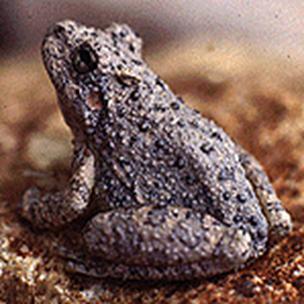


|
Lissamphibia:
The subclass Lissamphibia includes all recent amphibians. Extant amphibians fall into one of three orders - the anurans (frogs and toads), the urodeles or caudata (newts and salamanders), and the caecilians (limbless forms). Although the ancestry of each group is controversial, all share certain common characteristics, which indicates they evolved from a common ancestor and so form a clade. While the monophyly of the Lissamphibia is accepted by many herpetologists and paleontologists, the origin and relationships of the various Lissamphibian groups both with each other and among other early tetrapods remains controversial. Not all paleontologists are convinced that the lissamphibia are indeed a natural group, as the various characteristics are also shared with some Paleozoic amphibians, and it is still possible that these characteristics evolved independently. Currently there are three prevailing theories of Lissamphibian origin: monophyletic within the temnospondyli, monophyletic within lepospondyli, and diphyletic (two separate ancestries) with apodans within the lepospondyls and salamanders and frogs within the temnospondyli.
Characteristics:
The following characteristics are shared by some, most, or all Lissamphibia. Some of these apply to the soft body parts and hence not present in fossils. Those which refer to the skeleton and are fossilisable are also known from several types of Palaeozoic amphibians - most ) 1.Two types of skin glands (mucous & granular) 2.Fat bodies associated with gonads 3.Double-channeled sensory papillae in the inner ear 4.Green rods (a special type of visual cell, unknown in caecilians) 5.Ribs do not encircle body 6.Ability to elevate the eye (with levetator bulbi muscle) 7.Forced pump respiratory mechanism 8.Cylindrical centra (the main body of the vertebra; cylindrical centra are also found in several groups of early tetrapods) 9.Pedicellate teeth (the crown of the teeth is separated from the root by a zone of fibrous tissue; also found in some Dissorophoidea; the teeth of some fossil salamanders are not pedicellate) 10.Bicuspid teeth (two cusps per tooth, also found in juvenile dissorophoids) 11.Operculum (small bone in the skull, linked to shoulder girdle by the opercularis muscle; perhaps involved in hearing and balance; absent in caecilians and some salamanders, fused to the stapes (ear bones) in most anurans) 12.Loss of posterior skull bones (also in Microsauria and Dissorophoidea) 13.Small, widely separated pterygoids (also found in Temnospondyli and Nectridea) 14.Wide cultriform process of the parasphenoid (also found in some Microsauria (Rhynchonchos) and Lysorophia) 15.Double or paired occipital condyle |
